Loading...

Wrestling
In simple terms, we can define wrestling as a sport that involves forcing the opponent to touch the ground. The roots of this combat sport can be traced back to ancient Greece, where it was used to train the soldiers, it is also referenced in the cave painting of France. In the Indian context, wrestling has always been an extremely popular sport with several regional styles. It was traditionally known as Malla-yuddha and has been mentioned in epics like Ramayana and Mahabharata. In fact, Bhim is referred to as the most accomplished wrestler in Mahabharata. Other popular names for wrestling in India include kushti, pehlwani, malyutham and dangal. In the North Indian states of Punjab and Haryana, wrestling takes place on a soft ground called ‘akharha’. Wrestling has different forms such as freestyle, Greco-Roman, judo, sambo, folkstyle, to name a few. Freestyle wrestling has been a part of Olympics since 1920, however the women’s event was introduced only in 2004. Let’s understand the basics of freestyle wrestling. Scoring and Rules A typical bout is divided into two periods of 3 minutes each with a 30 second break in between. The wrestlers compete with each other on a mat having a diameter of nine meters. The main objective of the game is to pin the opponent’s shoulders to the mat for a short duration of time, this gives the wrestler an instant victory by ‘fall’. However, victory by fall is a rarity especially in big competitions like the Olympics and World Championships. Therefore, the most common way of winning a bout is through points. The points range from 1-5 and the point a move carries depends on the level of difficulty. Points can be scored in the following ways: Passivity: 1 point is awarded to the attacking wrestler when the opponent flees the hold or refuses to start. Out-of-Bounds: When a wrestler places his/her foot in the protection area, a point is awarded to the opponent. Reversal: A point is awarded for reversal that is when the wrestler gains control over the opponent from a defensive position. Penalty: If a wrestler takes injury time-out, the opponent receives a point unless the injury has resulted in bleeding. Other violations such as fleeing the mat or hold, striking the opponent, etc lead to a penalty of 1 or 2 points, a caution (3 cautions results in the match being awarded to the opponent) and choice of position to the opponent. Exposure: When the back of the opponent is exposed to the mat at an
Read More
Hockey
Hockey is considered to be the oldest ball and stick game, it can be traced back to the Greek, Persian and Roman civilizations, each of them having their own versions of the game. At present, the term ‘Hockey’ can be used to denote field hockey (the matches are played on either grass, artificial turf, watered turf, synthetic field or indoor boarded surface), ice hockey (the matches are played with ice skates on an ice skating rink) or roller hockey (the matches are played on a dry surface with roller skates). In most parts of the world including India, the term hockey automatically refers to ‘field hockey’. The game is played on a rectangular field which is 100 yards long and 60 yards wide, marked with a centre line and two 25 yard lines. Every player uses sticks which are curved at the striking end to hit the ball into their opponent’s goal. There are two teams of 11 players each, consisting of 5 forwards, 3 halfbacks, 2 fullbacks and a goalkeeper. Only the goalkeepers are allowed to stop the ball with their foot or body, all the other players can stop and pass the ball only with their sticks. The total duration of the match is 60 minutes, having four quarters of 15 minutes each. There is a 2 minute break after the first and the third quarter. The interval after the second quarter, also known as the half time is 15 minutes long. The following are some of the basic rules of hockey that you should be aware of: A player can hit the ball only with the flat side of the stick.A field goal, which is a goal that can be scored during the open play, needs to be scored from inside the ‘striking circle’. If the ball is hit from outside the circle, then the goal doesn’t count.Hockey is a no contact sport, therefore, the players can not trip, push, charge at, interfere with or physically handle the opponent in any way.All fouls result in a free hit or a ‘penalty corner’. There are two umpires in hockey, usually each of them is responsible for half of the pitch. A player who breaks the rules can be shown a green, yellow or red card. The Green card is an official warning to the player to not break the rules. The Yellow card sends the player off the pitch for 5 minutes. The Red card is given for serious offenses and results in the player being sent off. History of Hockey in India Hockey was introduced to India during British rule. India’s
Read More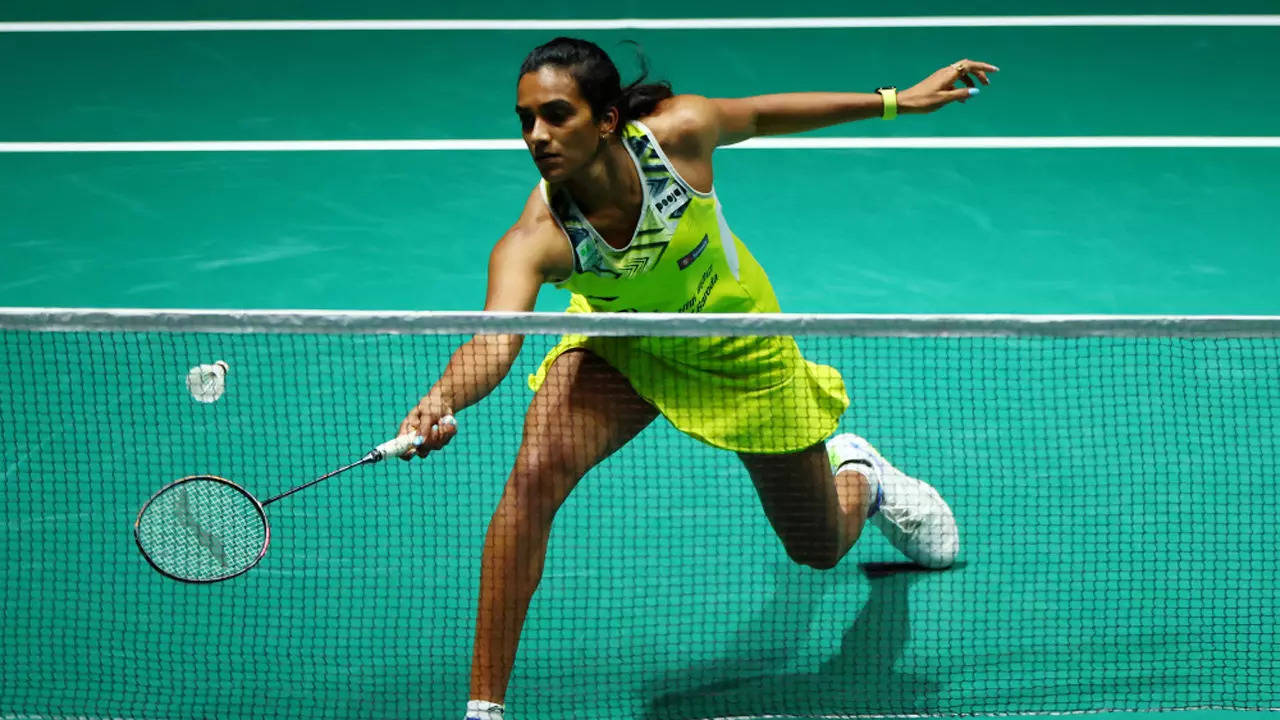
Badminton
Badminton is a racquet sport, which uses lightweight racquets to hit the shuttlecock (also known as bird/birdie) across the net. Although people in general consider badminton as an outdoor activity, the formal games are played on a rectangular indoor court. The current form of the game was developed in British India. The game can be played in ‘singles’, ‘doubles’ and ‘mixed doubles’ format. When it debuted in the 1992 Summer Olympics, there were only men’s/ women’s singles and doubles event, the mixed doubles event was added 4 years later. The Badminton World Federation is the body responsible for governing the sport internationally. The rectangular court is divided into half by the net, it must be noted that the doubles court (20 feet) is wider than singles court (17 feet), but both have the same length (44 feet). The height of the net is 5 feet at the centre and 5 feet 1 inch at the edge. There is a short service line that is at a distance of 6 feet 6 inches from the net, the server has to make sure that the shuttlecock passes over this line, otherwise the opponent gets a point. Scoring A match consists of 3 games, each game is played for 21 points, that is the first player to reach 21 points wins the game. A player needs to win at least two of the three games to win the match. A point is awarded to the side which wins a rally, regardless of whether they were the server or not. Then the winner of the point gets the next serve. If the score reaches 20-20, then the players require 2 points to win the game, however, if in this process the score reaches 29-29, the one who gets the 30th point wins. How do you win a point? A player wins a point if the shuttlecock lands inside opponent’s half of the court, that is within the boundaries. If it lands outside the boundary then a point is conceded. In case the shuttle hits the net, passes through it or under it or if the player strikes the shuttle twice with their racquet, they end up conceding a point. Even touching the net with your body or racquet concedes a point. The following are some basic rules of the sport: Before the start of a rally the players stand diagonally in the opposite service courts. For a serve to be considered legal it must be hit diagonally over the net. The serve must be hit below the server’s waist and the racquet shaft should be pointing downwards. When a point is won, the players move into the opposite service station for the next rally.
Read More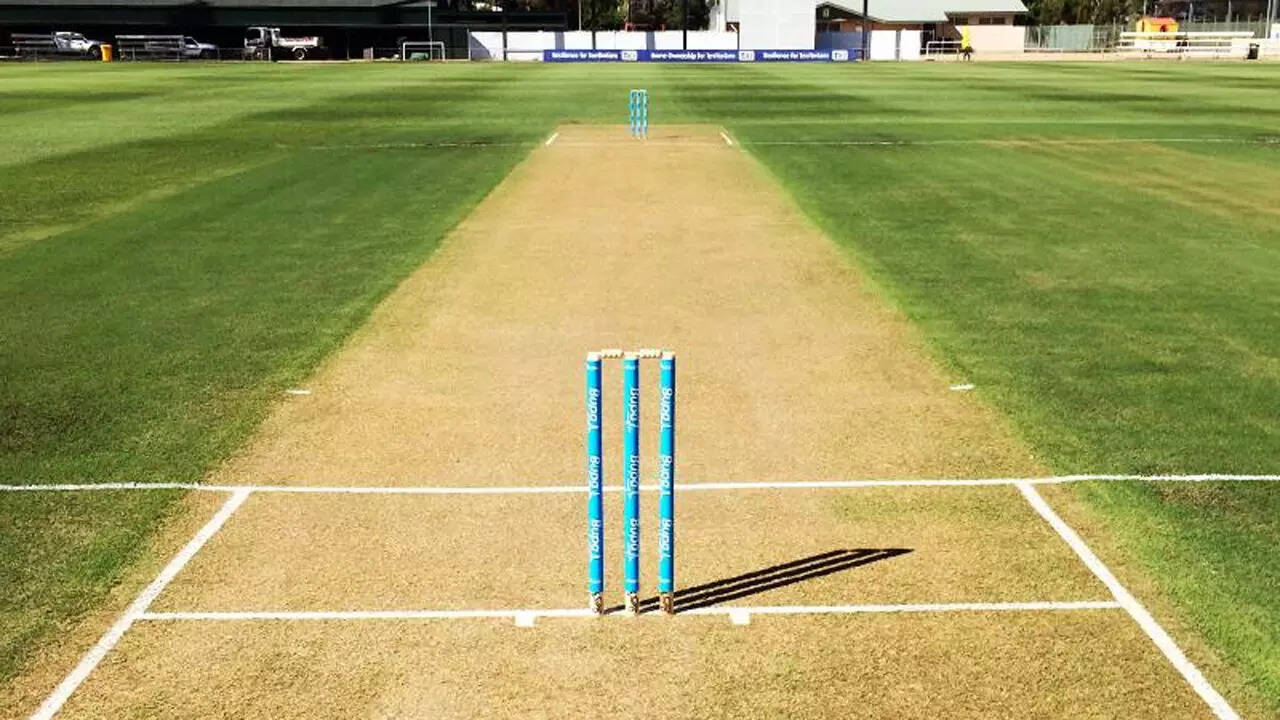
Cricket
Cricket is one of the most popular sports in India. It is played between two teams of 11 players each. At the center of the field there is a 22 yard pitch with a wicket on each end, having two bails balanced on the three stumps. The main objective of the game is to score more runs than the opposing team. There are two innings and each team gets an opportunity to bat and bowl. Originating from south-east England, the sport established itself globally during the 19th and 20th century. The International Cricket Council (ICC) is responsible for governing and administering the game. At present, 108 countries are members of ICC, 12 of them being Full members. How is the game played? At the beginning of the game, a toss decides the fielding and batting team for the first innings. All the players of the fielding team are present on ground, with a wicketkeeper behind the stumps. A bowler bowls the ball from one end of the pitch, with the aim of taking a wicket, while conceding minimum possible runs. The bowler needs to be changed after every over, which consists of 6 legal deliveries. The total number of overs in a match varies according to the format. T20 consists of 20 overs and the game lasts around 3 hours, an ODI has 50 overs which lasts around 8 hours and Test matches are played over a period of 5 days. The batting side has two players on the field, if one of the players loses their wicket, the next player takes their place. An innings ends with either the required number of overs being bowled or 10 players of the batting side losing their wickets. A batter can score runs either by running across the pitch or hitting the ball across the boundary, for either a four (if the ball touches the ground before reaching the boundary) or a six (if the ball reaches the boundary without touching the ground). The following are certain other ways through which runs are awarded to the batting side: No Ball: A ball can be declared as a no ball for many reasons, such as when no part of the bowler’s foot is behind the crease or if the ball is bowled as a full toss above the waist of the batter. It is not counted as a legal delivery and the batting team gains a run. The batter can score runs off the no ball but cannot get out from it. Wide Ball: If the delivery is too wide or high for the batter to hit a normal cricketing shot. Bye: When runs are scored without the bat hitting the ball. Leg Bye: When runs are scored with the ball hitting the
Read More
Football
Football, also known as soccer in North America and Oceania, is a game in which two teams of 11 players each try to maneuver the ball into the opposing team’s goal using any part of their body except their hands and arms. The team with the most number of goals wins. With around 4 billion fans worldwide, football holds the title of the most popular sport in the world. If we go into the history of the game, the roots of modern football can be traced back to 19th century Britain, where the game was codified at the English Public Schools. Presently, Fédération Internationale de Football Association (FIFA) is the global governing body of the sport. How is the game played? Time: A game is 90 minutes long excluding any stoppages such as player injuries, substitution,etc. It has a half time interval of 15 minutes during which the teams change ends. If neither side wins during this time, ‘extra time’ is played to establish the winner and if required a series of penalty kicks are taken. Field Markings: For international matches, the playing field should be 100-110 m long (also known as the touch line) and 64-75 m wide (also known as the goal line). It is divided into two halves with a halfway line, a circle of 9.15 m radius is marked around the center mark of the halfway line. No opposition player should enter the circle during the kickoff. The goal post is 5.5 m long and 18.23 m wide. The penalty area is a bigger box which integrates the goal area and the penalty mark and is 16.5 m long and 40.32 m wide. The penalty mark is 11 m from the goal line. Rules: The following are some basic rules that you must know: The ball is considered to be out of play when it crosses either the touch line or goal line or the referee has blown the whistle to pause the game. If an attacking player in the opponent’s half is closer to the opponent’s goal line than both the second-last opponent and the ball, then the player is considered to be in an offside position and can be penalized if the referee believes that he/ she is gaining an advantage over the opposition. It is one of the trickiest rules of the game. A penalty kick is awarded to the team if the opposition player commits a major foul. A throw-in is awarded to a team when the ball has gone out of touch line and the last touch of the ball is by an opposing player. Kicking, tripping, striking, head butting and pushing another player can lead to fouls and invite
Read More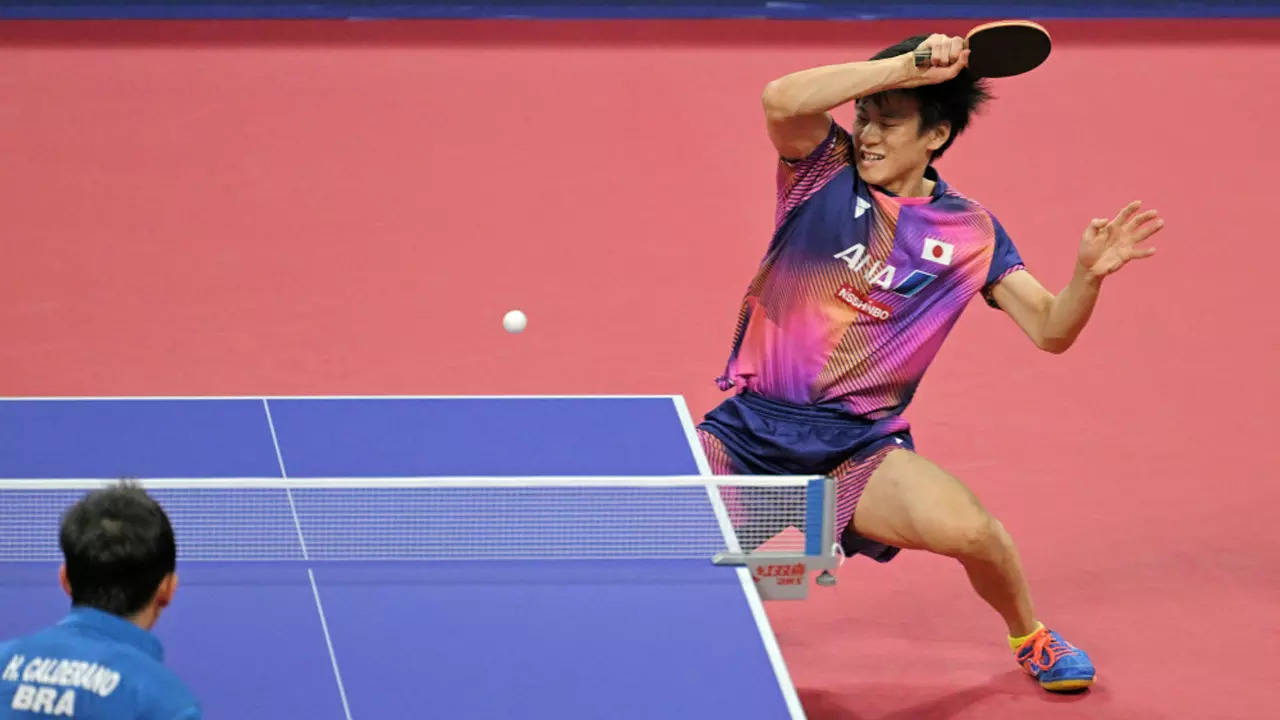
Table Tennis
Table Tennis, also known as ‘ping-pong’ or ‘whiff whaff’ is a ball game which is similar to lawn tennis but is played on a flat table that is divided into two equal courts by a net. The players hit the lightweight ball back and forth using small solid rackets. The matches are played between 2(singles) or 4(doubles) players. The objective of the game is to hit the ball in such a way that it crosses the net and bounces on the opponent’s half in a manner that makes it difficult for the opponent to reach the ball. Table tennis started off as an imitation of indoor tennis due to bad weather. It was improvised in the 19th century English clubs where they used to play on a pool table, using a string as the net and books as the rackets. After going through a series of names the sport officially became registered and received the name of table tennis in 1920. The game further expanded in other countries and in 1926 the International Table Tennis Federation(ITTF) was formed in Berlin to govern the sport. It instituted the rules and started promoting championships. However, table tennis was not included in the Olympics until 1988, where China has been dominating the sport for years. How is the game played? As per the ITTF rules the first serving is decided by a coin toss, another common practice is that one of the players or the umpire hides the ball usually under the table and the other player has to guess in which hand the ball is. The correct guess gives the player the option to decide whether to serve or receive. The server commences the play by tossing the ball upwards, at least 16cm high and then strikes the ball as it descends so that the ball first touches server’s court and then the receiver’s court, without touching the net. The receiver must hit the ball before it bounces the second time on his end, thereafter both the players must alternatively make a return till the rally is over. Scoring A point is scored by a player in case the opponent: Doesn’t make a correct service or return.Hits the ball and it goes beyond the end line without touching the player’s court.Obstructs the ball.Strikes the ball with the side of the racket that is the surface which is not covered with rubber.Touches the playing surface with the free hand.Who had been warned commits a second offense in the same match. Generally, national tournaments have 5 sets and the
Read More
Weightlifting
Weightlifting is also commonly known as Olympic-style weightlifting, where each athlete is aiming at successfully lifting the heaviest weights. The athletes compete to lift a barbell loaded with weight plates in two specific competitions, snatch and clean and jerk. The snatch is a single move lift with a wide grip, it requires the weighted barbell to be lifted to arm’s length overhead. The clean and jerk is a two move lift in which the weight is first lifted from ground to the shoulders (the clean) and then lifted overhead with a straight elbow (the jerk), the weightlifters have to hold it until the buzzer sound. Each weightlifter gets three attempts in each category with the snatch attempts being done first. The final score is the total of the highest successfully lifted weights (in kgs). The weightlifting events first featured in the 1896 Olympics and continued till 1904, post that they were briefly halted till 1920. 1920 was also the year when the International Weightlifting Federation (Fédération Haltérophilie Internationale) was founded to standardize and oversee the international competitions. Apart from the Olympics, IWF World Weightlifting Championship is the flagship event for the sport, where athletes compete in 20 categories. Scoring and Rules Out of the three attempts given to the weightlifter in both snatch and clean and jerk competitions, the best attempt in each of the competitions is added up. The weightlifter with the highest combined weight lifted is the winner. If two weightlifters lift the same amount of weight, then the one with the lower body weight is declared the winner. If the body weight is also equal, the one with the lesser attempts will be the final winner. The weight categories in weightlifting can be classified as follows: Men’s: 61 kg, 67 kg, 73 kg, 81 kg, 96 kg, 109 kg and over 109 kg.Women’s: 49 kg, 55 kg, 59 kg, 64 kg, 76 kg, 87 kg and above 87 kg. It must be noted that women’s weightlifting event was not included in the Olympics until the year 2000. The following are some basic rules of weightlifting that you should know: A participant is allowed to increase the weight in the next attempt only after a successful lift. The weightlifter who decides to lift the lowest weight in the 1st attempt is allowed to go first and has to lift it within a minute of his/her name being called out in the tournament. Weightlifters are allowed to cover parts of
Read More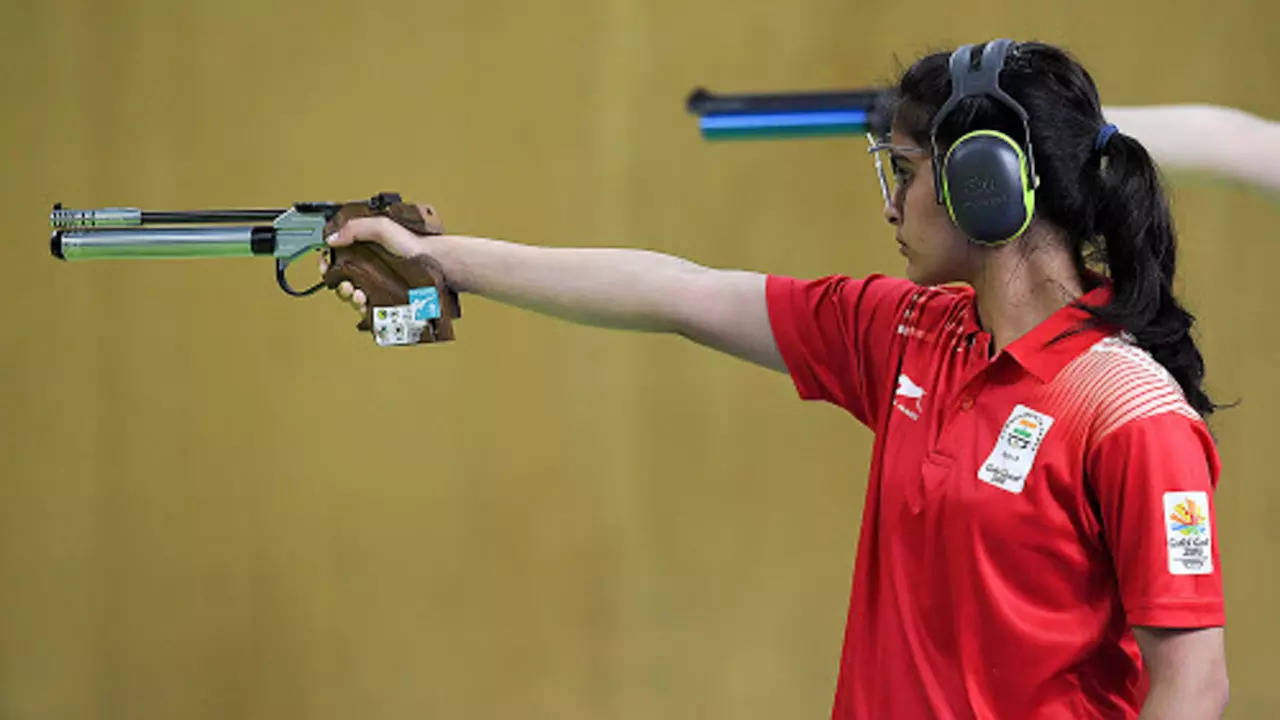
Shooting
Shooting as a sport tests the accuracy, precision and speed of the shooter. When the Olympic Games were resurrected in 1896, Baron Pierre de Coubertin, who is considered to be the founder of modern Olympics, contributed to the inclusion of shooting events at the Games. However, women first started competing in Olympic shooting only in 1968 and until 1980, they competed against men. It was only in the 1984 Olympics that there was a distinct program for women comprising of 3 events. There are nine shooting disciplines at the Summer Olympics, they have been explained below: Rifle: Rifles are long shoulder firearms which require two-hand hold. The events include: 50 meter rifle three positions (men and women) 50 meter rifle prone (men) 10 meter air rifle (men and women) In the 10m event, the shots are fired from a standing position. Each participant gets to shoot 60 bullets in the qualifying round and based on the aggregate scores the top 8 advance to the final. In the finals, elimination method is used to remove the lowest-scoring competitors as the tournament proceeds. In the final shots just two competitors compete for the gold medal. In the 50m rifle event which is available to both men and women, shots are fired from standing, kneeling and prone positions using a single-load rifle. Men fire 40 and women 20 shots at each position during the qualification round and the top 8 proceed to an elimination based final round with 15 shots at each position. Pistol: Pistols or handguns are smaller guns used for shorter ranges. The events include: 50 meter pistol (men) 25 meter rapid fire pistol (men and women) 10 meter air pistol (men and women) Pistol competitions take place at indoor shooting ranges. In the 10m event, each participant gets to shoot 60 bullets in the qualifying round and based on the aggregate scores the top 8 advance to the final, where an elimination process similar to the rifles event is followed. In the 25m category there is a distinct structure for the men’s and women’s event. The men’s qualification round consists of 6 sets of 5 shots that are fired in quick succession. The top 8 advance to the elimination round after two qualifying rounds of 30 shots each. For women, the first qualifying round is a precision test and 30 single shots are fired at the target. The second qualifying round involves shooting 30 rapid-fire rounds. In olympics, the 50m event is only open to
Read More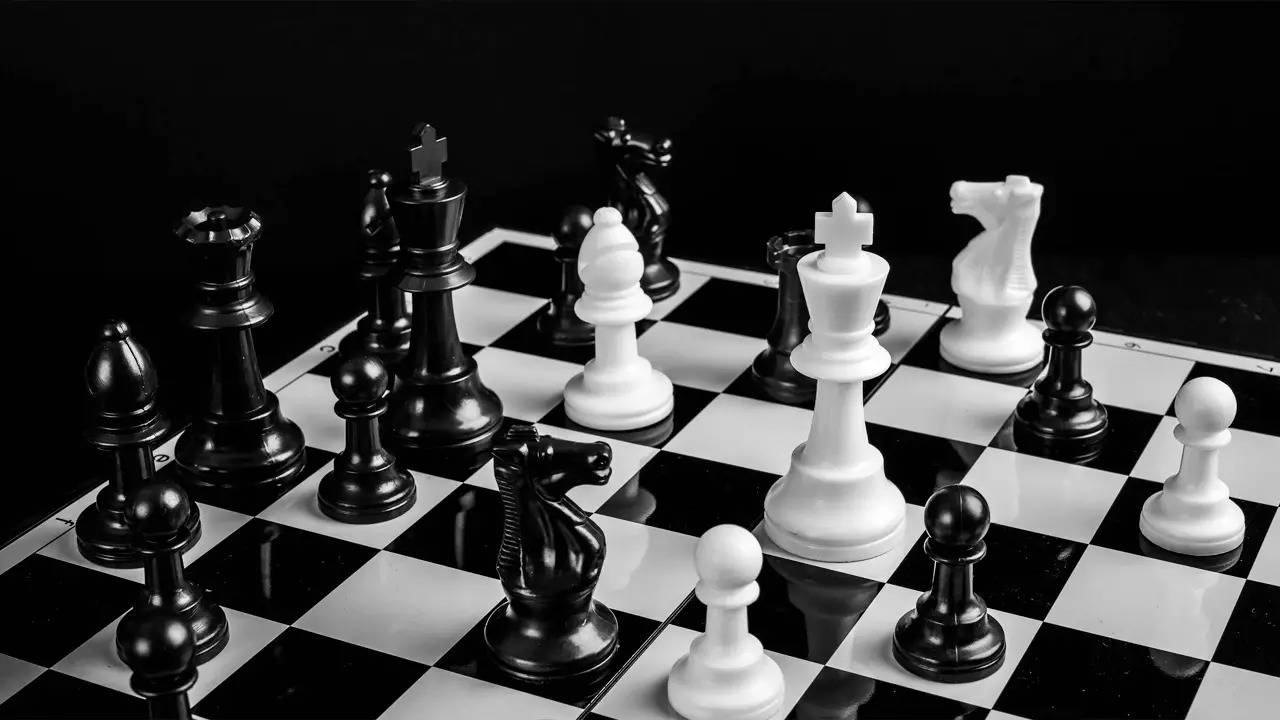
Chess
Chess is a board game that involves two players, who move the pieces with the objective to checkmate the opponent's king. A chessboard has a total of 64 squares in alternate colors (light and dark), arranged in an eight-by-eight grid. Having its roots in India, the game is believed to have originated during the Gupta empire, where it was called chaturanga. In the modern version of the game, each player has 16 pieces under their control. These include: 1 King1 Queen2 Rooks2 Bishops2 Knights8 Pawns The International Chess Federation (FIDE) governs the chess competitions internationally. Let’s understand the rules of chess as per the FIDE Handbook: Setup The chess pieces are in two different color sets of 16 pieces each. The sets and the players of the respective sets are referred to as ‘black’ and ‘white’, even if the sets are not literally black or white. The rows in a chessboard are called ranks and the columns are called files. So, the order, left to right on white’s first rank or row is: rook, knight, bishop, queen, king, bishop, knight, rook. The eight pawns are present in the second rank. The position of black mirrors that of white. The queen is placed on her own color, that is white queen is placed on the light square and vice-versa. Movement of pieces The white moves first, then the players move a piece in alternate turns. Castling is an exception where two pieces are moved in a single turn. It involves moving the king two squares towards a rook on the same rank and then moving the rook to the square the king passed over. However, this move is only permitted if the king and the rook have not been moved previously, the squares between both of them are vacant and the king is not leaving, crossing over or ending up on a square attacked by an opposing piece. A piece can only be moved to a vacant square. If it is moved to a square occupied by the opponent's piece, the opponent’s piece gets removed from the play. A player cannot skip a turn, even when moving a piece is undesirable. The king can move one square in any direction. A queen can move any number of squares along a rank/file or diagonally. A rook can move any number of squares along a rank or file, that is it can move either horizontally or vertically. A bishop can move any number of squares diagonally, this implies that it can only move on either white or black squares that is the color it was initially placed on.
Read More
Follow us on